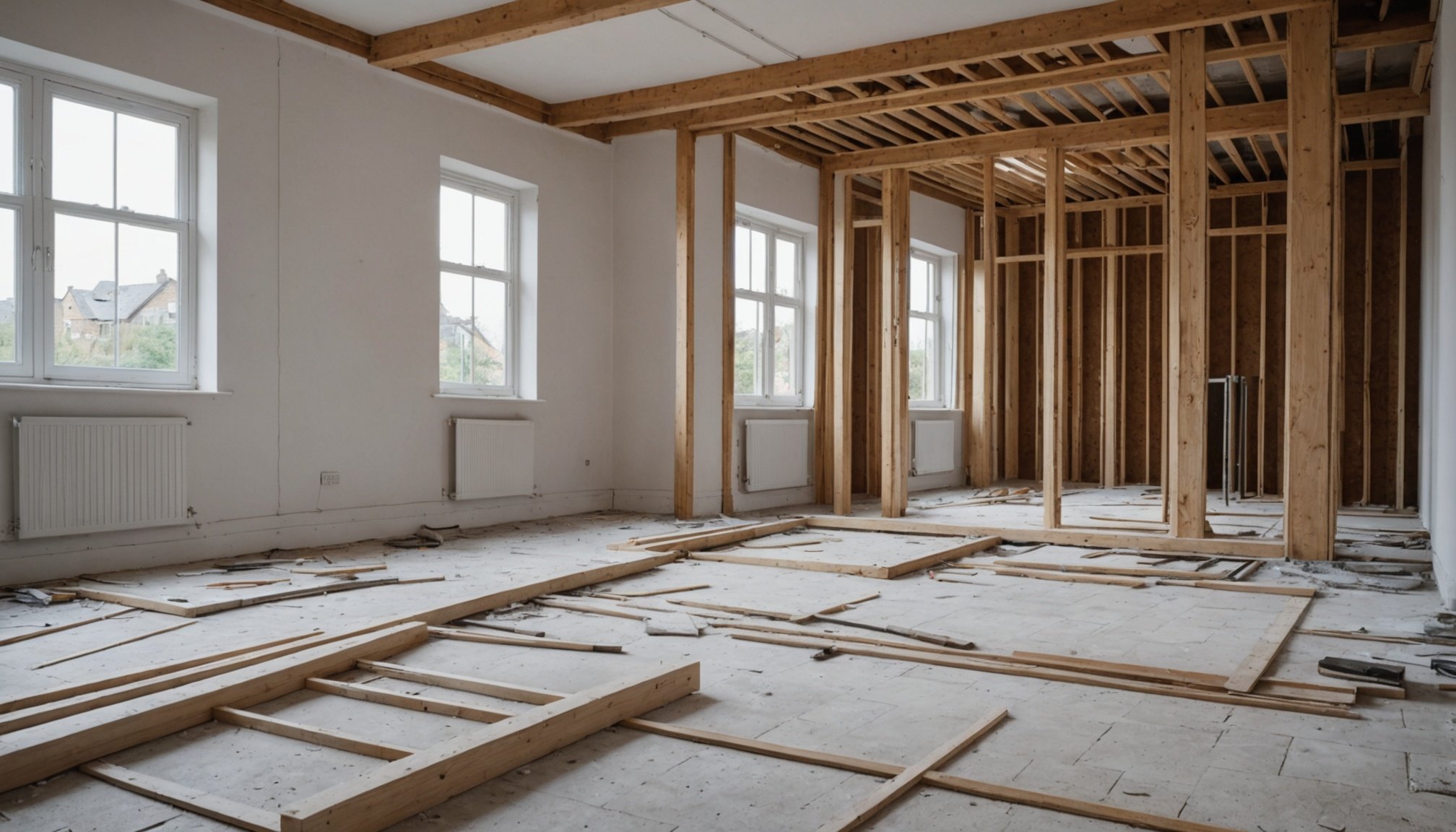Renovating a property can be a daunting task, particularly when it comes to financing the necessary work. Whether you’re aiming to increase the value of your house, improve your living space, or prepare a property for sale, understanding your financing options is crucial. This article will explore various methods for funding renovations in the UK, including loans, mortgages, and other financial solutions. We aim to provide you with clear, concise information on the costs involved, interest rates, and the best lenders to consider for your home improvement projects.
Understanding the Basics of Property Renovation Financing
Before diving into specific financing options, it’s essential to understand what property renovation entails. Renovations can range from minor upgrades, like painting or landscaping, to significant structural changes, such as adding extensions or converting attics. Each type of renovation will have different costs associated with it, and understanding these can help you decide the best way to finance your project.
Also to discover : What are the potential pitfalls of purchasing a leasehold property in the UK?
One critical aspect to consider is the overall budget for your renovation. Most homeowners underestimate the costs involved in renovations, leading to financial stress down the line. It’s advisable to obtain detailed quotes from contractors and include a contingency fund of around 10-20% of the total renovation budget to cover unexpected expenses. Once you have a clear understanding of your budget, you can evaluate your options for financing.
In the UK, financing renovations typically involves accessing funds through various means. You might consider bridging loans, remortgaging your existing property, or even taking out personal loans. Each financing option comes with its own set of interest rates, terms, and costs, which can affect your overall financial situation.
Also to see : How can new homeowners in the UK create a budget for ongoing property maintenance costs?
Understanding these basic concepts will set a solid foundation for exploring each financing method. You will need to assess your financial circumstances, the scope of your renovation, and your long-term goals to choose the right financing solution.
Exploring Mortgage Options for Renovation
One of the most common ways to finance a renovation is through your existing mortgage or by remortgaging your property. With the right mortgage terms, you can access additional funds to cover renovation expenses. This method is often considered more affordable due to potentially lower interest rates compared to personal loans.
When considering this route, you’ll want to look into a remortgage with a higher loan-to-value (LTV) ratio, which can allow you to borrow more against the equity in your home. Many lenders offer renovation mortgages specifically designed for homeowners looking to renovate. These loans often come with flexible terms, enabling you to access funds upfront or progressively as work is completed.
However, there are important factors to consider before choosing to remortgage. First, assess the costs associated with remortgaging, such as arrangement fees and valuations. Then, compare this with the potential increase in the value of your property post-renovation to ensure that the investment is worthwhile. Additionally, be mindful of the interest rates during your remortgage period, as these can fluctuate based on the market.
Ultimately, remortgaging can be a smart way to access funds for renovations while keeping your monthly repayments manageable. Just ensure that you conduct thorough research and compare offers from different lenders to find the best deal that suits your financial situation.
Personal Loans and Bridging Finance
If remortgaging is not a viable option for you, personal loans or bridging loans might be worth exploring. Personal loans can provide quick access to cash without the need to remortgage your property, making them a suitable option for smaller renovation projects.
Typically, personal loans are unsecured, meaning they do not require collateral, but they often come with higher interest rates than secured loans. The amount you can borrow will largely depend on your credit score and financial history. If you have a good credit rating, you may be eligible for better terms, including lower costs and interest rates. It’s advisable to shop around and compare lenders to find the best personal loan for your needs.
On the other hand, bridging loans can be a perfect solution for homeowners who need immediate funds for renovations, especially if you’re planning to sell your property shortly after completing the work. These short-term loans can provide quick access to cash, allowing you to finance renovations without waiting for traditional loan approvals.
Bridging loans are typically more expensive and come with higher interest rates, so they should be used cautiously. They are best suited for those who have a clear exit strategy, such as selling the property or refinancing to a long-term mortgage once the renovations are complete. Understanding the potential risks and ensuring that you have a solid plan in place is essential for utilizing bridging finance effectively.
Creative Financing Solutions for Renovations
In addition to traditional loans and mortgages, there are several creative financing solutions available for funding renovations. Among these options are credit cards, home equity lines of credit (HELOCs), and government grants or schemes designed to assist homeowners.
Using a credit card for renovations can be tempting due to their easy access and convenience. However, be cautious about the interest rates associated with credit cards, as they can be significantly higher than other forms of financing. If you choose this route, it is essential to pay off the balance as quickly as possible to avoid accumulating high costs from interest.
Alternatively, a HELOC allows you to borrow against the equity built in your property. This option provides flexibility in borrowing, as you can withdraw funds as needed during your renovation project. Because HELOCs are secured against your property, they typically come with lower interest rates compared to personal loans or credit cards.
Lastly, don’t overlook potential government schemes that can assist with renovation financing. Programs like the Help to Buy scheme or energy efficiency grants can provide much-needed financial support for homeowners looking to improve their properties. Researching these options can help you save money and achieve your renovation goals without overextending your budget.
In summary, being creative in your financing approach can yield significant benefits. Consider all available alternatives and choose the method that aligns best with your financial capabilities and renovation objectives.
Financing renovations on a property in the UK involves careful consideration of various options available to you. From remortgaging or using personal loans to tapping into creative financing solutions, there are numerous pathways to securing the funds necessary for your project.
Before making a decision, evaluate the overall costs associated with each option, from interest rates to any potential fees. Remember to take your long-term financial goals into account and ensure that the method you choose will not overburden you financially.
In conclusion, with the right financing plan in place, you can effectively transform your property through renovations, enhancing its value and improving your living experience. By exploring all avenues and making informed financial choices, your dream renovation is within reach.











